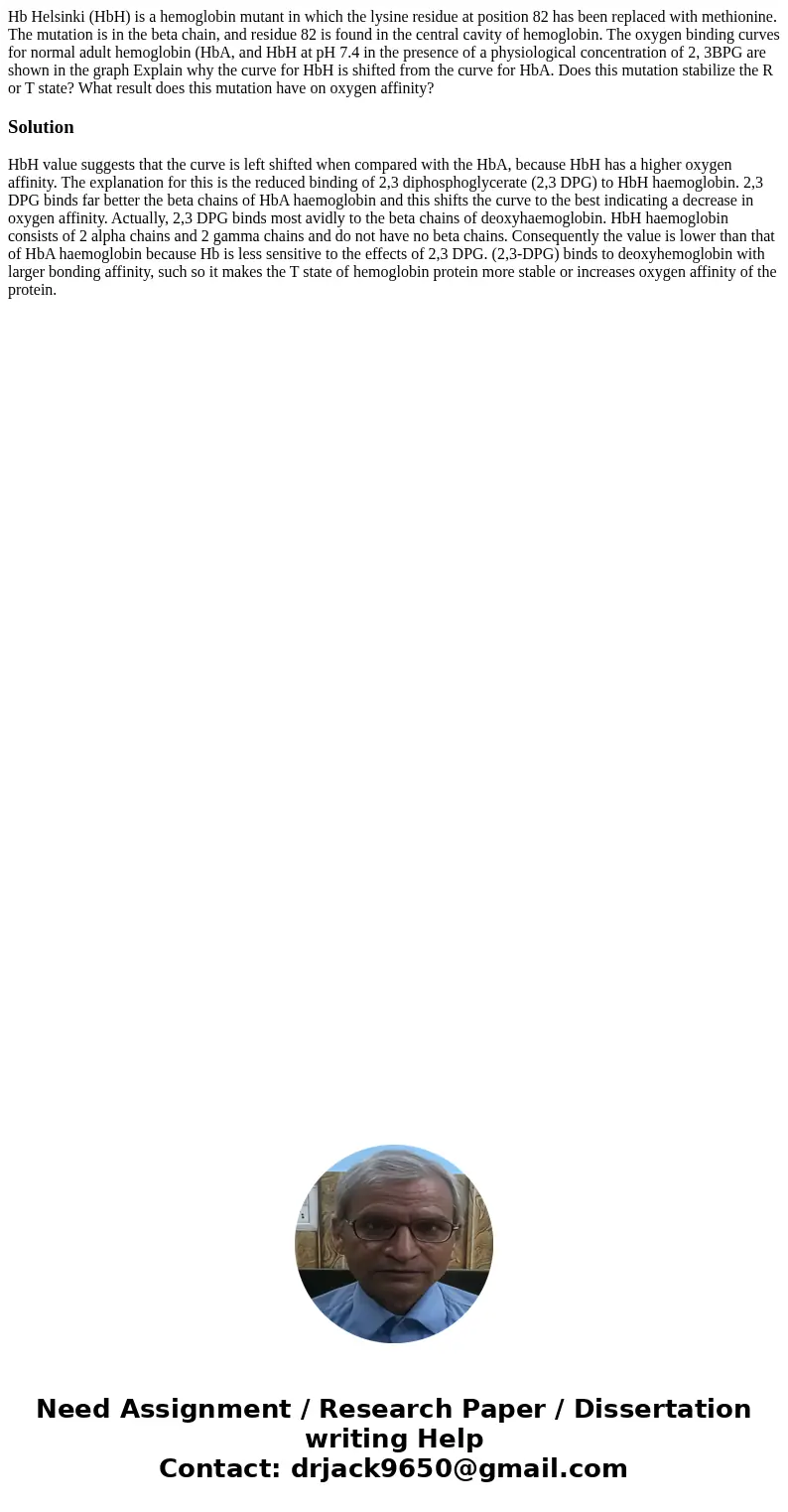Hb Helsinki HbH is a hemoglobin mutant in which the lysine r
Solution
HbH value suggests that the curve is left shifted when compared with the HbA, because HbH has a higher oxygen affinity. The explanation for this is the reduced binding of 2,3 diphosphoglycerate (2,3 DPG) to HbH haemoglobin. 2,3 DPG binds far better the beta chains of HbA haemoglobin and this shifts the curve to the best indicating a decrease in oxygen affinity. Actually, 2,3 DPG binds most avidly to the beta chains of deoxyhaemoglobin. HbH haemoglobin consists of 2 alpha chains and 2 gamma chains and do not have no beta chains. Consequently the value is lower than that of HbA haemoglobin because Hb is less sensitive to the effects of 2,3 DPG. (2,3-DPG) binds to deoxyhemoglobin with larger bonding affinity, such so it makes the T state of hemoglobin protein more stable or increases oxygen affinity of the protein.

 Homework Sourse
Homework Sourse